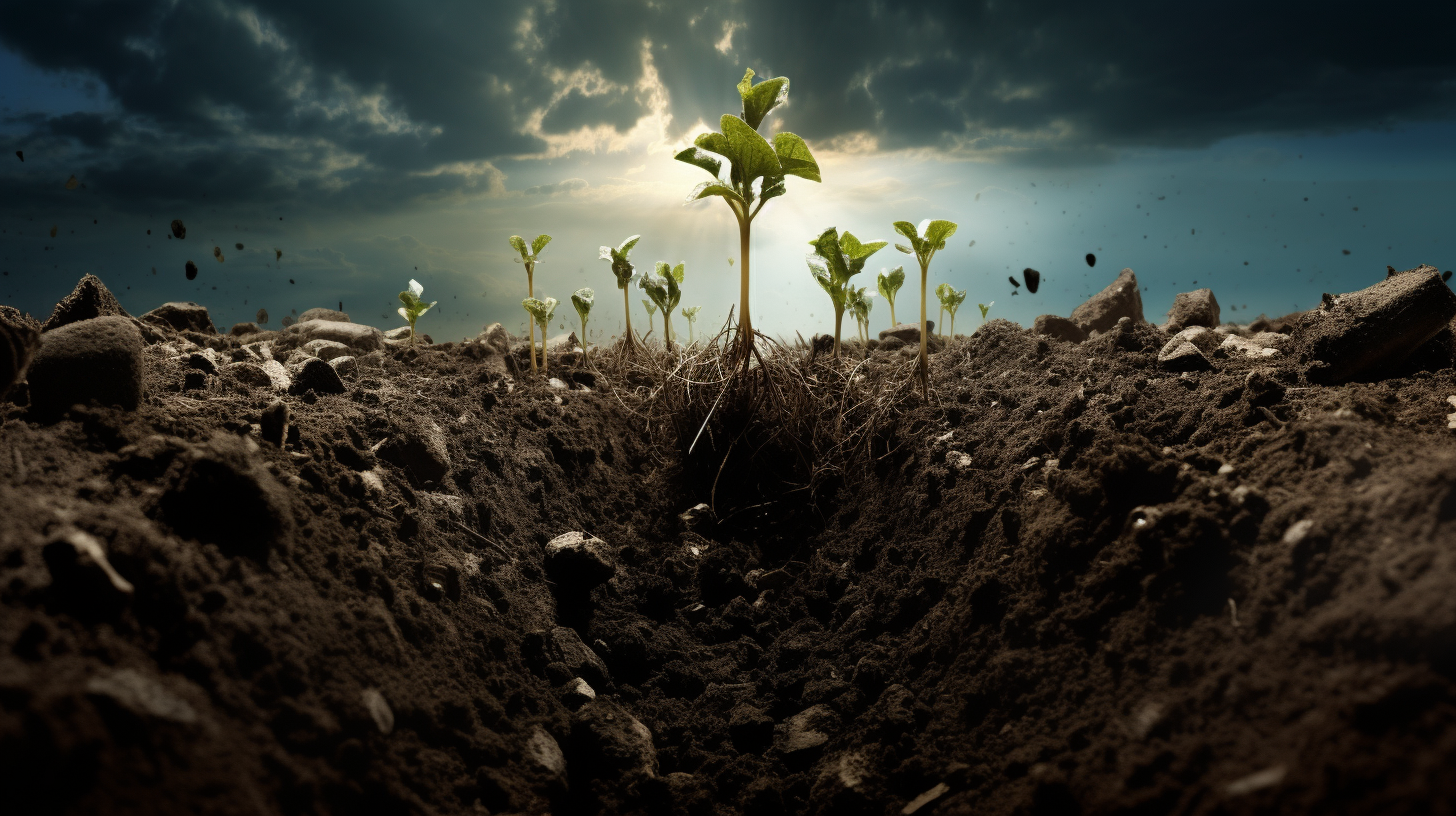In the shadow of a once verdant world, we now tread upon soil as barren as our hope – cracked and saline. It is a canvas of despair that paints itself as a stark reminder of our apathy. How do farmers cultivate crops when the very ground beneath their feet is a testament to ecological betrayal? Let us delve into the paradoxical quest for agricultural redemption amidst our salted earth, as we explore the enigmatic and resilient ‘Seeds of Salvation’.
As if ripped from folklore, a brave cadre of scientists and agronomists band together, sowing what could be our final gambit against starvation – halophytes. These salt-loving plants offer a glimmer of sustenance where none should logically exist. Their ability to thrive in saline soil is nothing short of magic in our eyes, although science would humbly demur, attributing it to millennia of evolutionary mastery.
The scene is almost biblical – fields that were once flooded by the inexorable rise of the oceans are now converted into patchworks of saltwort and samphire crops, glossed over with a sheen of briny dew each morning. Their purpose? To provide nutrients in a land left nutrient-bereft. To stand as a symbol that even in the direst of circumstances, life persists. And life, although obstinate, is not without irony. ‘To eat of the earth’s salt’ was once a phrase cozy with hospitality. Now, it is a literal motto of survival.
Agronomists world over are capitalizing on ancient wisdom, breeding new varieties of these saline superheroes. Technologies once employed to modify plants for beauty now labor for our very survival, yielding crops that can drink the tears of the earth and bear fruits of defiance.
Our understanding of agriculture must shift. Traditional techniques have not just faltered; they have collapsed entirely beneath the weight of saltwater inundation. Raised beds, greenhouse escapism, and vertical farming are no longer futurist’s fancies but immediate necessities. Integration of these methods with the utilization of halophytes represents the precarious bridge over which we must pass to ensure future food security.
Consider the quinoa, a highland crop revered by ancient Incas, now positioned as a beacon of hope. Its saline tolerance makes it a heroic figure in our agricultural tome, which is rapidly being rewritten by climate change. But let us not be mistaken, for this is no panacea. The specter of a complex ethical dilemma looms as we navigate the tightrope between GMO acceptability and the harsh mandate of survival.
A voice from the past echoes, a wise agronomist who once proclaimed, ‘The earth is not a reservoir of bounty, but a delicate architecture of balance.’ Never has this seemed more prophetic. We realize that our survival hinges upon interconnectivity with, and respect for, the cycles and systems of the natural world.
And what of the social fabric of our farming communities, inextricably woven into the DNA of agriculture? Here, in the heart of desolation, we find remarkable tales of resilience and adaptation. A farmer gazes at his saline plot not with despair but determination, crafting floating gardens – vibrant rafts of green defiance in the midst of the saline desert.
The ‘Seeds of Salvation’ are bitter, yet they nourish. They are defiant, thriving on what should be agriculturally bereft. These crops are existential poetry, growing from a narrative of human neglect, they have the audacity to offer a morsel of redemption.
In conclusion, ‘Seeds of Salvation’ is not a euphoric gospel of redemption; it is a harsh, pragmatic ballad of adaptation. As with prior reports on ‘Solar Scarcity’ and ‘Drowning Harvests’, hope is a strained concept, almost out of reach. Yet, these seeds tell a story — of innovation amidst disaster, a flicker of adaptation in the dark of a world far gone. Until next time, we sew what we reap – brackish, stark, but unyielding.
